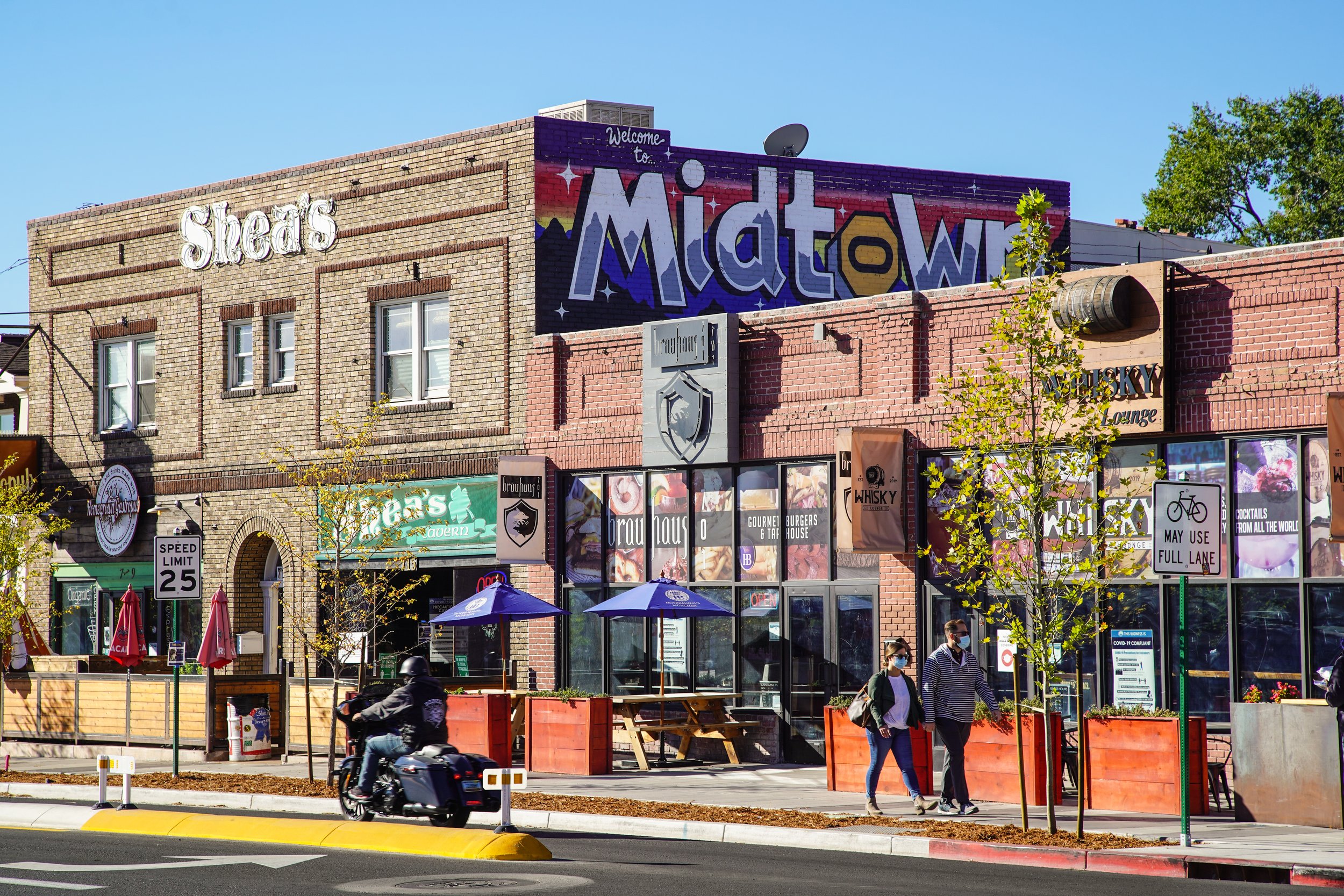



Vibrant nightlife and commerce attract higher property crime, requiring vigilance against vehicle break-ins.

The Midtown corridor presents significant socioeconomic challenges within a densely populated urban environment that experiences higher crime rates than most comparable neighborhoods.
Midtown Reno houses 1,641 residents with a median age of 48 years in a concentrated commercial-residential corridor that runs parallel to Virginia and Center Streets.² The area encompasses approximately 1,006 housing units with 59.39% occupied by renters.²
The neighborhood represents a lower-middle income area with a median household income of $57,370, substantially below both the citywide median of $73,073 and the broader Washoe County median of $85,600.²¹ Income levels rank lower than 85.0% of U.S. neighborhoods.¹
Most residential properties were constructed between 1970 and 1999, with a median home value of $534,450.² The area maintains a 6.0% vacancy rate, positioned near the national middle range.¹
Midtown faces significantly elevated public safety challenges that exceed both city and national averages across multiple crime categories.
The neighborhood reports a crime rate of 107.4 per 1,000 residents during a standard year, substantially higher than surrounding areas.³ This places Midtown in the 18th percentile for safety, meaning 82% of neighborhoods are safer.³
Assault rates in Midtown receive an F grade, placing the area in the 4th percentile for safety, with 96% of neighborhoods experiencing lower assault rates.⁴ Residents face assault victimization odds as high as 1 in 64 in northwest sections of the neighborhood.⁴
By crime count, approximately 75 incidents occur annually in northern parts of Midtown, while southwestern areas experience around 15 incidents per year.³
The neighborhood experiences notable economic stress indicators that correlate with increased security risks.
Child poverty affects 18.7% of minors in the area, exceeding rates found in 66.7% of U.S. neighborhoods.¹ This represents a higher concentration of economic distress than most comparable areas.
Manufacturing and laborer occupations comprise 30.5% of the working population, while 27.6% work in executive, management, and professional roles.¹